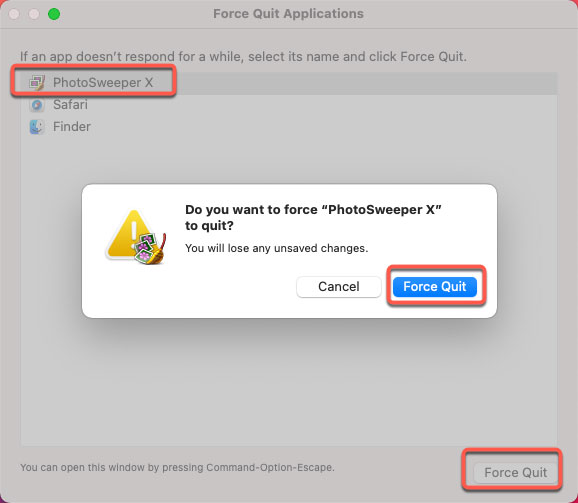

- #PHOTOSWEEPER MOVE LOCKED PHOTOS HOW TO#
- #PHOTOSWEEPER MOVE LOCKED PHOTOS MANUAL#
- #PHOTOSWEEPER MOVE LOCKED PHOTOS SOFTWARE#
We have tested all of these on various Mac devices running different versions of macOS, and we have given our expert views on how effective they are, and the pros and cons of each.

Each of them has their own set of advantages and drawbacks, as you will see.
#PHOTOSWEEPER MOVE LOCKED PHOTOS SOFTWARE#
So, what are the tools available to find and delete duplicate files, photos and other data? Below, we've reviewed six different software utilities that you can use for this purpose. If you're a busy person who needs the job done quickly and efficiently, this is the recommended way to do it. The software will typically identify all duplicates and give you the option to delete them in bulk.
#PHOTOSWEEPER MOVE LOCKED PHOTOS MANUAL#
The biggest advantage is that there is usually very little manual input required. The third method is to use specific desktop applications that use complex algorithms to find and delete duplicates. In short, it could "break" your computer. It also gives room for human error, which means you might miss a lot of duplicate files or inadvertently change critical system settings. It's either that or resorting to extensive command line work that average users won't have the skills to handle. Alternatively, you could do some command line work create a list of duplicates, but you still have to delete them manually after referencing them with that list. Besides, if the files have modified file names or they're in different directories, it's almost impossible to spot them manually. Manually finding duplicate photos and files is certainly possible, but it's not the best use of your time. Manual Searching : The problem is, it's almost impossible to find and delete these space-hoggers unless you have the right tools for the job.
#PHOTOSWEEPER MOVE LOCKED PHOTOS HOW TO#
How to Find and Remove Duplicate Files on Mac? Any one or all these channels could be responsible for cleaning up your Mac computer with duplicate files and photos. In addition, there are email attachments, files generated by macOS applications and other sources of duplication. Sometimes, just transferring data from an external device to your Mac can cause duplicates to be generated.

The plethora of file-sharing utilities that we use everyday can be another reason. iCloud would sync multiple copies of photos on different iOS devics. iTunes is notorious for harboring fugitive duplicate music files on your Mac. There are several reasons for files being duplicated on your Mac. Simply put, a duplicate is a digital file that has other exact (or sometimes very similar) copies with the same content and size. So what is duplicate file and why my Mac keeps duplicating files? You would face the same consequential aspects on Mac computers. No matter which operating system you are using currently, at one point of time you are bound to run off space if you use it recklessly without paying attention to the issue of duplicate files.


 0 kommentar(er)
0 kommentar(er)
